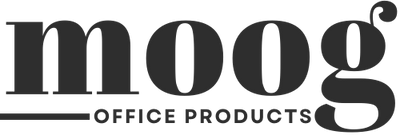The modern workplace is more diverse than ever before, not only in terms of culture, ethnicity, and gender but also in terms of age. For the first time in history, up to five generations can be found working together under the same roof, each with its unique perspective, work style, and set of values. From the tech-savvy Gen Z to the seasoned Baby Boomers, this mix brings a variety of strengths to the workplace, but it also presents challenges.
Understanding the unique traits of each generation and finding ways to collaborate effectively can foster a positive, productive environment for everyone. Here’s a guide to help navigate a multigenerational workforce, celebrating differences and building a workplace where all generations can thrive.
1. Understanding Each Generation's Work Style and Values
Each generation has been shaped by different societal influences and technological advancements, which impact how they approach work. Here’s a quick snapshot:
- Traditionalists (Born before 1946): Known for their strong work ethic and loyalty, traditionalists value respect and stability. They tend to be more formal in communication and appreciate structure.
- Baby Boomers (Born 1946-1964): Boomers are often known for their dedication and willingness to go the extra mile. They value face-to-face communication and often prefer working in a collaborative, team-oriented environment.
- Generation X (Born 1965-1980): Known as the "latchkey" generation, Gen Xers are independent, resourceful, and adaptable. They value work-life balance and are comfortable with technology but tend to prefer a pragmatic approach.
- Millennials (Born 1981-1996): Millennials grew up with the internet and mobile technology. They value purpose-driven work, flexibility, and regular feedback. They prefer digital communication and are comfortable with remote and flexible work environments.
- Generation Z (Born after 1997): Digital natives, Gen Zers are tech-savvy and value instant access to information. They are entrepreneurial, value diversity, and are accustomed to multitasking. They also expect open communication and appreciate innovation.
Understanding these general traits can help bridge gaps and foster mutual respect among team members.
2. Encourage Open Communication and Empathy
Misunderstandings can easily arise in a multigenerational workplace due to differing communication styles. For instance, Baby Boomers may appreciate a phone call or in-person conversation, while Gen Z might prefer a quick text or instant message. Encourage open communication where team members can discuss their preferred methods of interaction and make adjustments as needed.
Empathy is also key. By taking the time to understand the perspectives of each generation, colleagues can appreciate the diverse experiences each person brings to the table. Whether it’s respecting a Baby Boomer’s extensive industry knowledge or appreciating a Millennial’s knack for innovation, empathy fosters collaboration.
3. Promote Cross-Generational Mentorship
One of the most effective ways to bridge generational gaps is through mentorship programs that go both ways. Older employees have years of knowledge and experience, which they can pass down to younger employees. Conversely, younger employees often have a strong grasp of current technology and modern work trends, which can be beneficial to older colleagues.
Encourage team members to partner with someone from a different generation. This reciprocal mentorship not only improves skills across generations but also builds mutual respect and understanding.
4. Foster Flexibility and Adaptability
Different generations often have varied preferences for work arrangements. For example, Millennials and Gen Z may favor flexible schedules and remote work options, while older generations might be more comfortable with traditional in-office hours. Offering flexible work arrangements, when possible, can help accommodate the diverse needs of your workforce.
Additionally, flexibility in learning and adapting to new methods and technologies should be encouraged. Older employees may need support adjusting to new digital tools, while younger employees might benefit from understanding more traditional processes. Embracing flexibility can help bridge the gaps and encourage a learning culture where everyone can adapt and thrive.
5. Celebrate Diversity in Skills and Experiences
Each generation brings something unique to the workplace, whether it’s a fresh perspective, tech-savvy skills, or years of industry knowledge. Instead of focusing on differences, teams should celebrate the diversity in skills and experiences that each member brings. Create opportunities for team-building activities, collaborative projects, and brainstorming sessions where different perspectives are valued and encouraged.
When team members recognize and value each other's strengths, it leads to better collaboration, innovation, and problem-solving.
6. Create a Respectful Environment
Respect is the foundation of any successful multigenerational workplace. Avoid stereotyping or making assumptions about an employee based solely on their age. Encourage team members to focus on individual strengths, skills, and potential rather than generational labels. A respectful environment fosters trust, loyalty, and productivity, enabling everyone to contribute their best work.
7. Regular Feedback and Recognition
Different generations may have varying preferences for receiving feedback. Millennials and Gen Z tend to appreciate regular feedback, while older generations might be accustomed to more traditional annual reviews. Offering a balanced approach that incorporates frequent check-ins, as well as periodic evaluations, can ensure everyone’s needs are met.
In addition, recognize achievements across the board. Celebrating milestones, contributions, and successes can boost morale and foster a sense of unity within the team.
Moog Desk Sets: Bridging the Generational Gap with Style and Functionality
In a multigenerational workspace, staying organized is crucial for managing different work styles and preferences. Moog Desk Sets are designed to bring structure and style to your workspace, helping you stay on top of tasks and projects no matter your work style. Whether you prefer a minimalist look or need a desk full of tools, Moog Desk Sets offer something for everyone, helping you bring your best self to work every day and fostering a workspace that promotes collaboration and productivity across generations.

